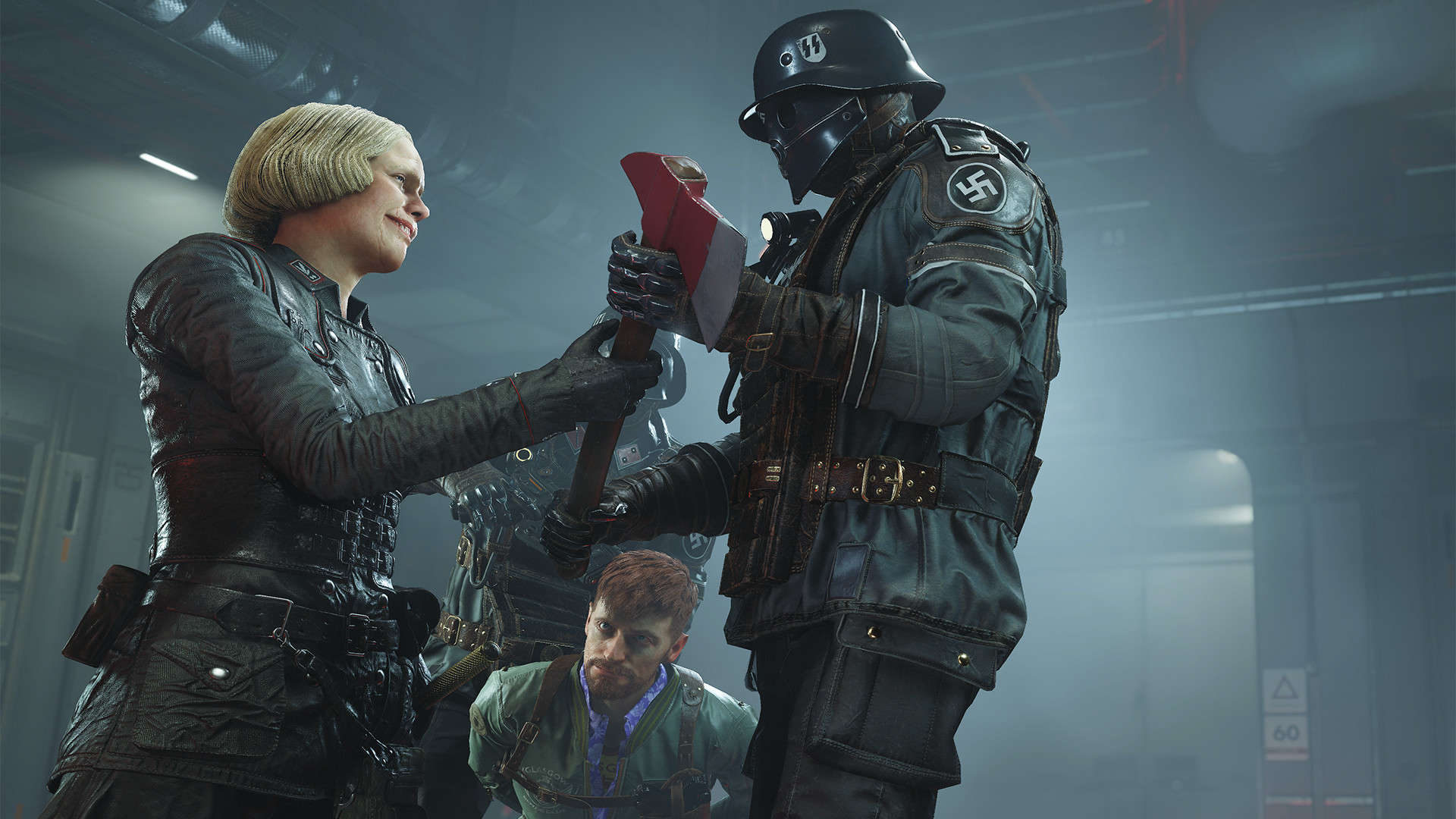Today, the first-person shooter genre is one of the most prolific types of video games on the market. It’s hard to picture a world without them. These games owe their success to massively popular titles from the ’90s like Doom, Quake, and of course, Wolfenstein 3D. These early FPS titles catapulted the genre to stardom. To this day, they are widely considered some of the most historically significant video games ever made. The Wolfenstein franchise is a particularly long-running series. Despite its role in revolutionizing the FPS genre, it has its roots much deeper, in a different genre entirely.
Castle Wolfenstein (1981)
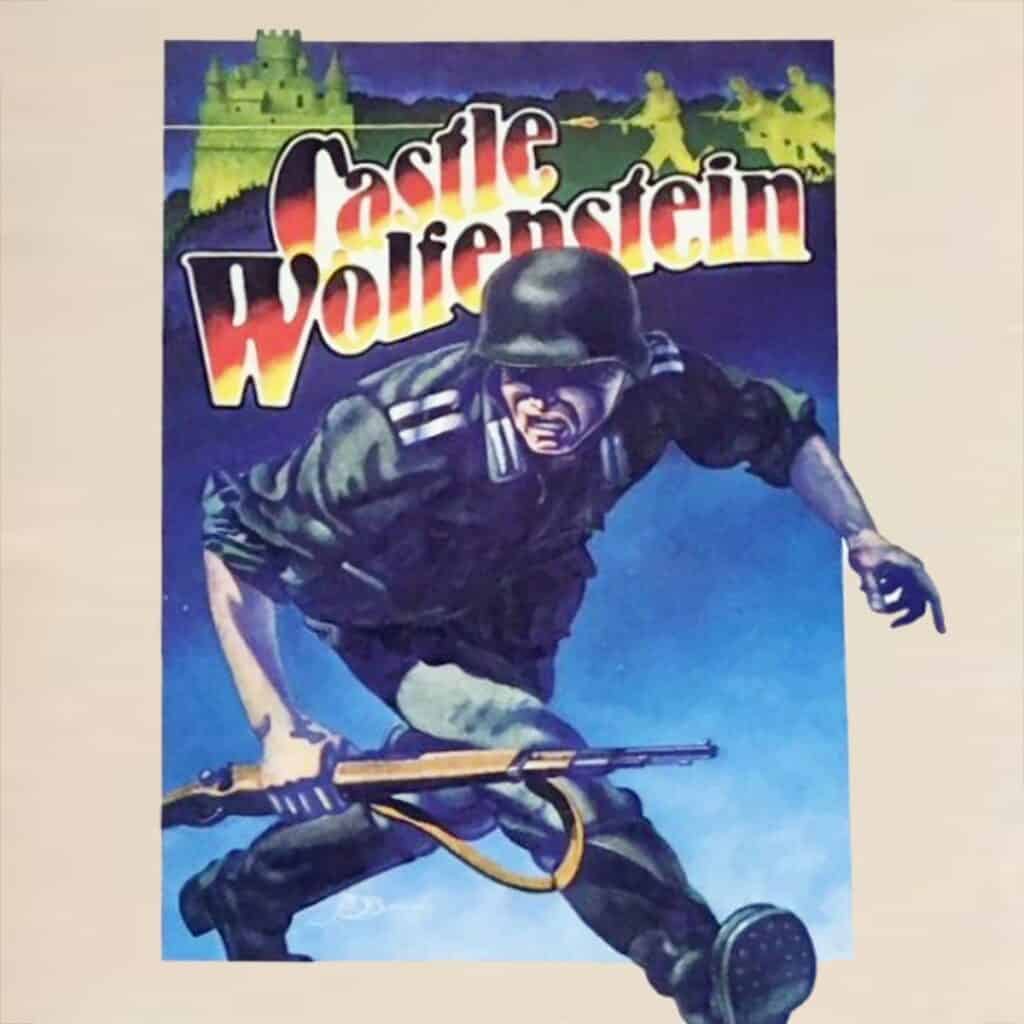
©Cover art for Castle Wolfenstein. – License
The Wolfenstein franchise got its start way back in 1981 with Castle Wolfenstein, developed by Muse Software for the Apple II computer. Later ports brought the title to Atari, Commodore 64, and MS-DOS. Unlike modern games in the franchise, Castle Wolfenstein was a 2D action adventure game that emphasized stealth. The game takes place during WWII and stars an Allied spy captured and imprisoned by Nazis. You must navigate a procedurally generated maze of hallways and Nazi guards to escape the titular castle, potentially discovering valuable battle plans along the way. Finding these plans will earn you a promotion upon escape, allowing you to play again in a more complex version of the castle on your next run.
Beyond Castle Wolfenstein (1984)
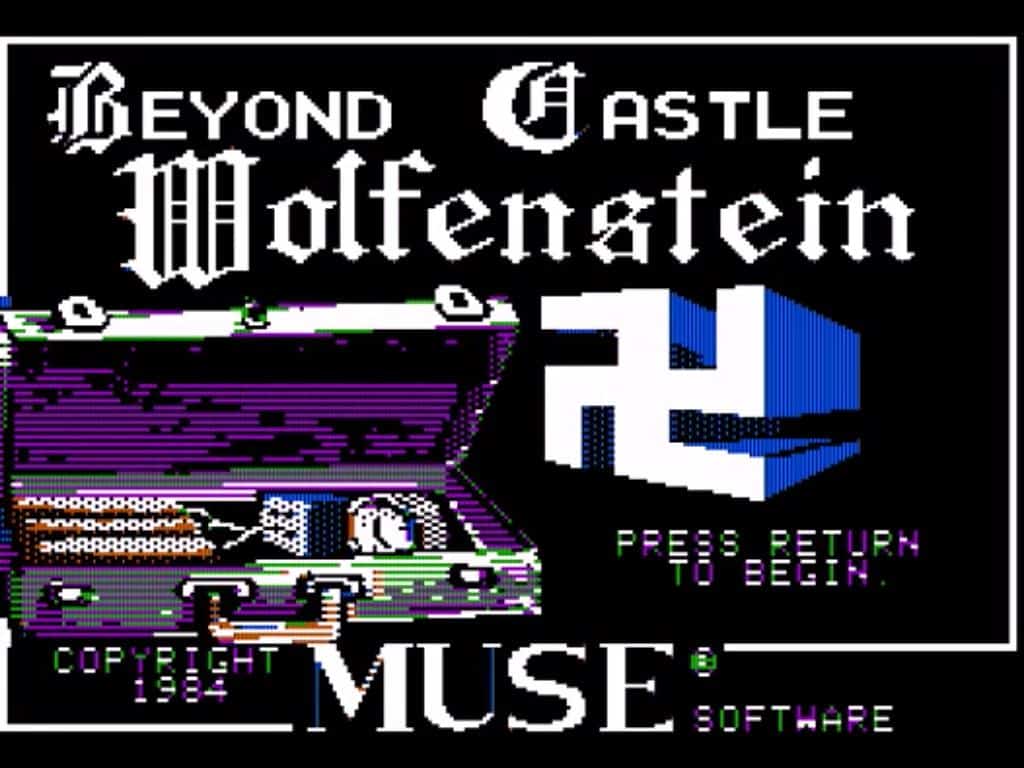
©Cover art for Beyond Castle Wolfenstein. – License
Muse Software’s next entry in the Wolfenstein franchise is a direct sequel to Castle Wolfenstein. Another stealth-focused adventure game, Beyond Castle Wolfenstein sees the player infiltrating Adolf Hitler’s secret bunker in an attempt to assassinate the dictator with a bomb. The title offers some minor changes to the gameplay from Castle Wolfenstein, namely a pass system used by guards. If a guard apprehends you while you’re lacking the correct pass, you’ll have to bribe your way out or risk alerting the base to your intrusion. The game was not received quite as well as the original, which was something of an instant classic when it launched. Critics felt Beyond Castle Wolfenstein didn’t enhance enough from the original.
Wolfenstein 3D (1992)
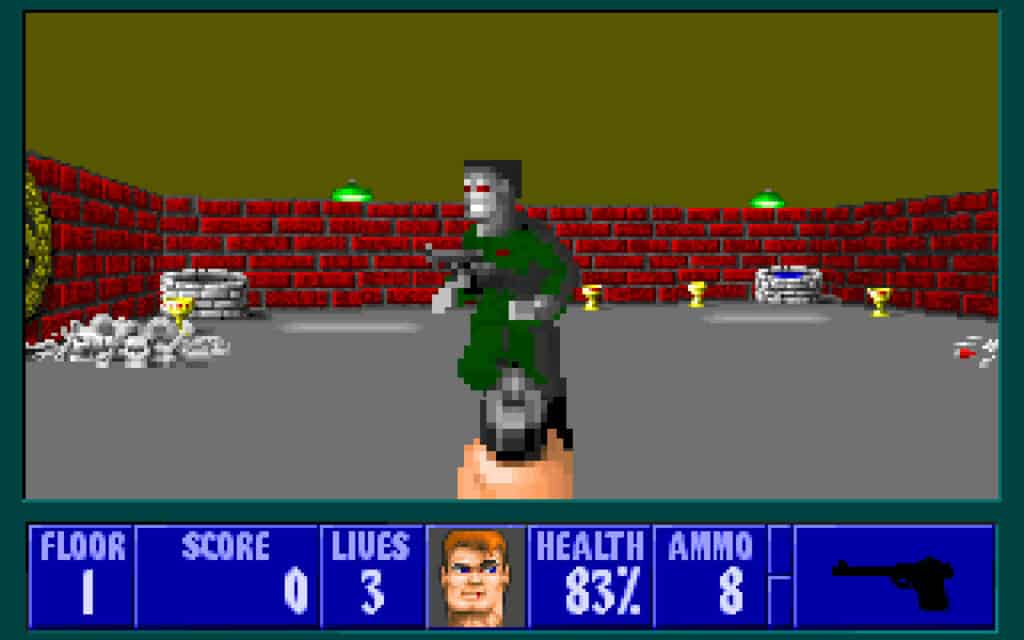
©Screenshot from Wolfenstein 3D – License
1992 saw the first entry in the franchise from legendary developer id Software. Wolfenstein 3D was the company’s first FPS success, and it’s widely considered the first true first-person shooter. It launched for DOS initially, but has received numerous ports in its lifetime, and is available on Steam to this day. In addition to marking the franchise’s shift to FPS, Wolfenstein 3D is also the first game to star William “B.J.” Blazkowicz, the iconic action hero who would go on to head the grand majority of subsequent games. It’s hard to overstate the influence and success of Wolfenstein 3D, or the importance of its legacy. The title cemented the Wolfenstein franchise as a cornerstone of the industry. Features like the final confrontation with Adolf Hitler serve as enduring pop culture images to this day.
Spear of Destiny (1992)
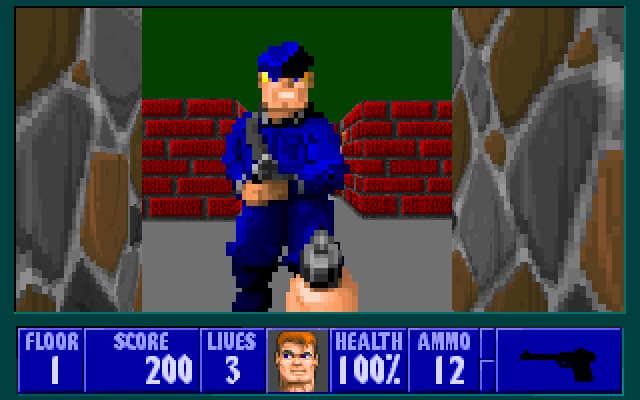
©Screenshot from Spear of Destiny – License
Four months after the release of Wolfenstein 3D, id Software launched an expansion called Spear of Destiny. This was technically a standalone game, though it uses the same engine as Wolfenstein 3D. This is a prequel mission that sees B.J. Blazkowicz fight to recover the Spear of Destiny, which was allegedly used to stab Jesus Christ during the crucifixion. The Nazis have claimed the spear for themselves, and intend to harness its occult powers to summon demons.
Return to Castle Wolfenstein (2001)
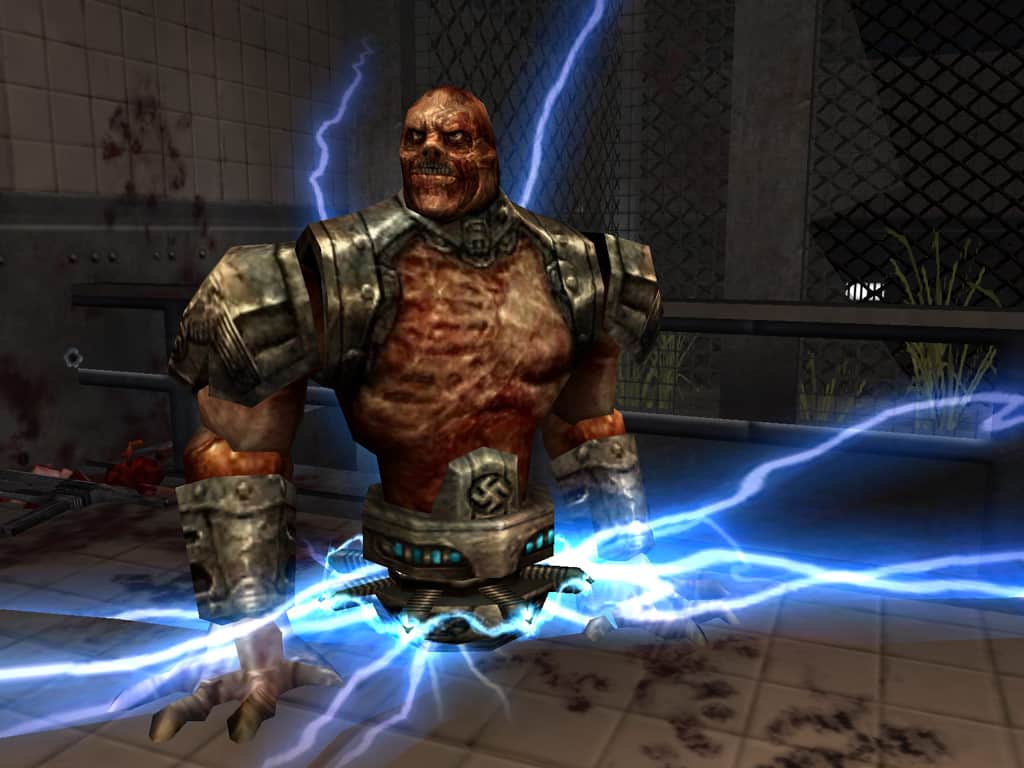
©Return to Castle Wolfenstein screenshot. – License
Almost a decade after Wolfenstein 3D revolutionized the video game industry, B.J. Blazkowicz returned to action. While id Software oversaw development of Return to Castle Wolfenstein, they did not directly develop it. Gray Matter studios developed the title, while Nerve Software created the franchise-first multiplayer mode. It initially launched for PC, with Xbox and PS2 ports following in 2003. The plot sees B.J. team up with a British operative named Agent One to confront a supernatural Nazi plot to resurrect the dead and unleash hordes of zombies. While reviews of the single-player content were lukewarm, the game received high praise for its multiplayer element. There was also some controversy for its decision to feature Nazis as a playable faction in multiplayer battles.
Wolfenstein: Enemy Territory (2003)
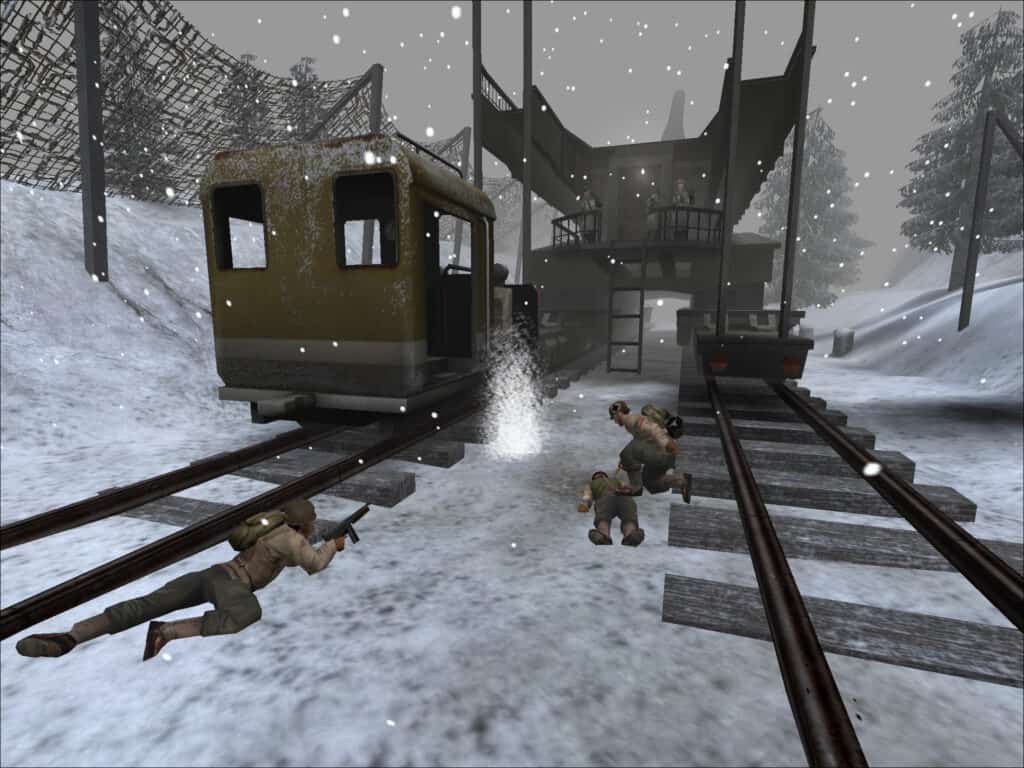
©wolfenstein: Enemy Territory screenshot. – License
The enduring success of Return to Castle Wolfenstein’s multiplayer mode led to the creation of Wolfenstein: Enemy Territory by developer Splash Damage. This free and open-source game was launched exclusively for computers, including a variety of operating systems such as Windows, Linux, AROS, Mac, and MorphOS. The title was originally envisioned as an expansion pack for Return to Castle Wolfenstein, but issues with the single-player mode resulted in significant changes. Splash Damage would later take inspiration from a different classic id IP for a commercial follow-up called Enemy Territory: Quake Wars.
Wolfenstein RPG (2008)
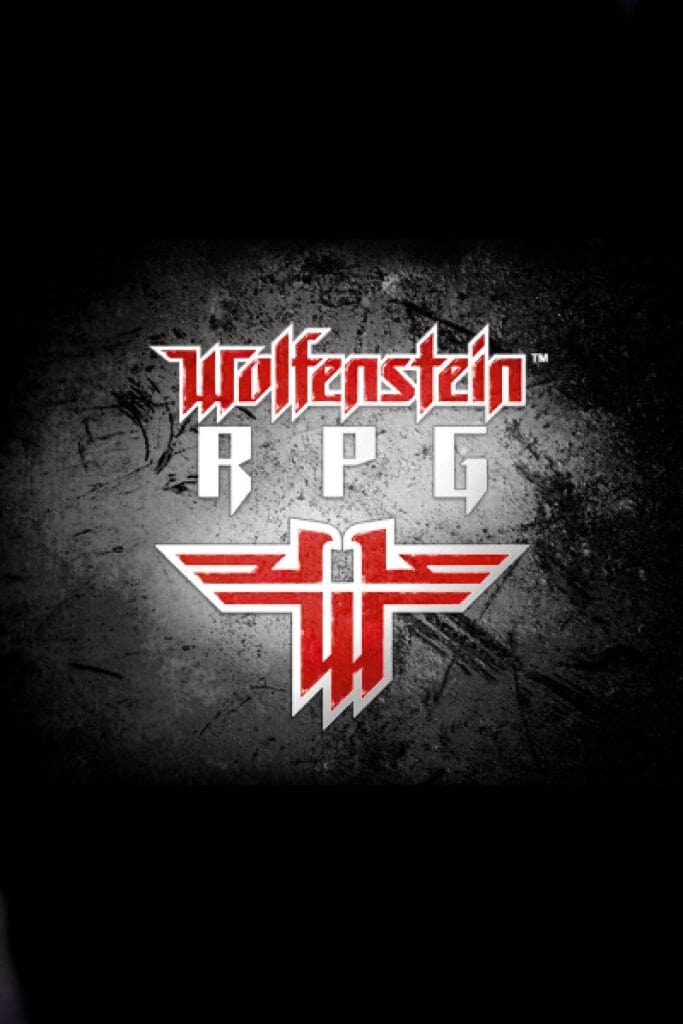
©Wolfenstein RPG screenshot. – License
In 2008, id Software and Fountainhead Entertainment partnered to bring the iconic Wolfenstein action to mobile phones. Wolfenstein RPG retains the iconic first-person perspective but considerably slows the gameplay experience down. The game is a turn-based experience instead of a fast-paced action game like previous titles. This makes navigation and combat much slower, placing the emphasis on strategy and encouraging thorough exploration of your surroundings. The plot is similar in basic structure to other Wolfenstein games; B.J. Blazkowicz gets captured by Nazis and must fight his way out, bringing down the sinister Paranormal Division in the process. The game is considerably more lighthearted than other Wolfenstein titles, however. Its unconventional take on humor and turn-based gameplay earned it high marks from critics.
Wolfenstein (2009)
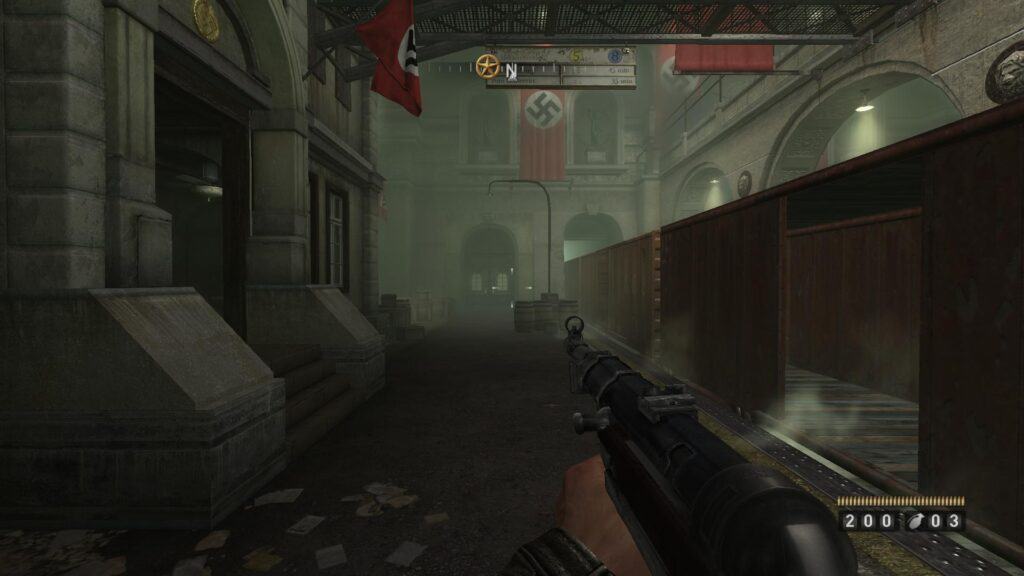
©Wolfenstein (2009) screenshot. – License
B.J. Blazkowicz would see another major video game release in 2009’s Wolfenstein, developed by Raven Software. The game launched for Windows, PS3, and Xbox 360. It once again follows B.J. Blazkowicz as he attempts to foil a Nazi plot to harness supernatural forces. During the events of the game, B.J. acquires a mystical relic called the Thule Medallion. This artifact grants him considerable power, and you can upgrade it throughout the game. Unfortunately, despite this twist, Wolfenstein underperformed. Critics gave it halfhearted praise but found it to generally lack depth.
Wolfenstein: The New Order (2014)
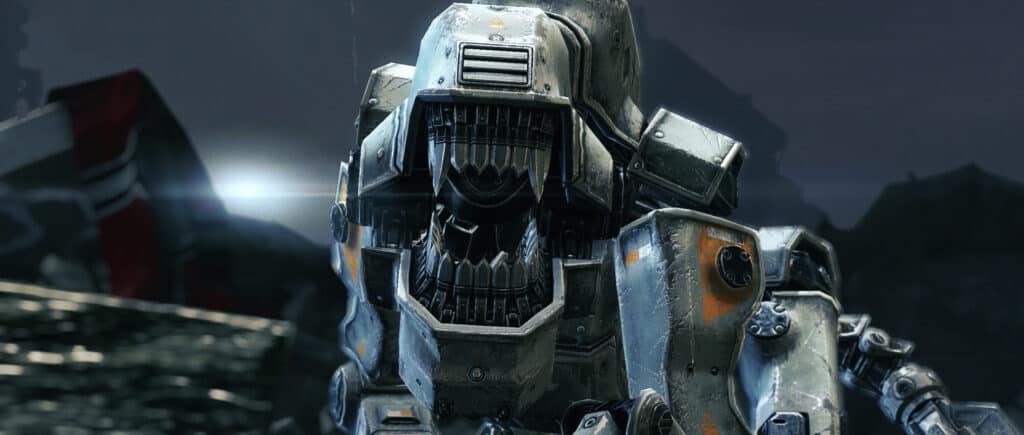
©Wolfenstein: The New Order screenshot. – License
In 2010, following the launch of Wolfenstein, the development rights for the franchise passed to MachineGames. Four years later, the developer launched Wolfenstein: The New Order, published by Bethesda, for PS3, PS4, Windows, Xbox 360, and Xbox One. Wolfenstein: The New Order was a flagship entry in the series as it marked a departure into an alternate timeline where the Nazis won World War II. Awakening into this grim new world, B.J. Blazkowicz makes contact with a resistance group known as the Kreisau Circle, which debuted in 2009’s Wolfenstein. Wolfenstein: The New Order was praised not only for its gameplay but for its narrative, which critics found much deeper and more satisfying than that of Wolfenstein five years prior. The title features the usual FPS combat but also presents a simple but engaging stealth mechanic that connects it, if tenuously, to the series’ origins in the ‘80s.
Wolfenstein: The Old Blood (2015)
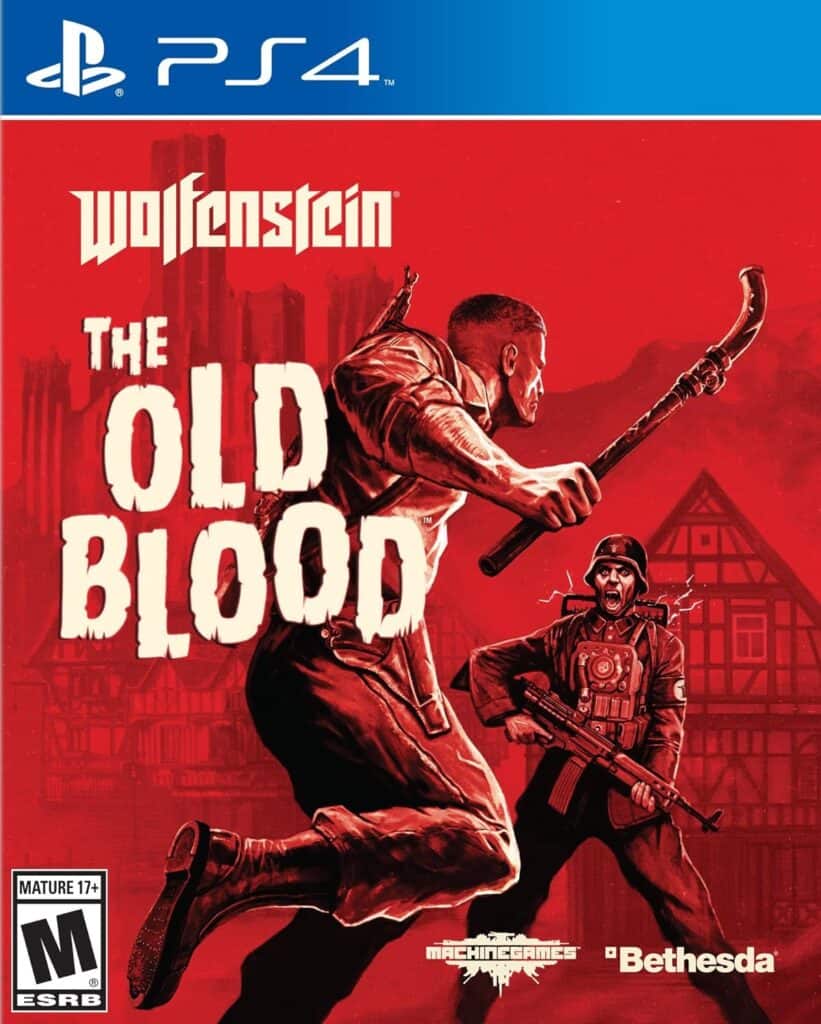
©Wolfenstein: The Old Blood cover art
After the success of Wolfenstein: The New Order in 2014, MachineGames returned with a brief prequel for PS4, Windows, and Xbox One. The Old Blood is split into two acts, both covering B.J.’s adventures in the notorious Castle Wolfenstein and the nearby village of Paderborn. The Old Blood borrows plot elements from Return to Castle Wolfenstein by once more bringing B.J. face to face with a horde of resurrected Nazi undead. The game earned praise for presenting a more streamlined version of New Order’s acclaimed combat, but some reviewers felt that the story suffered as a result.
Wolfenstein II: The New Colossus (2017)
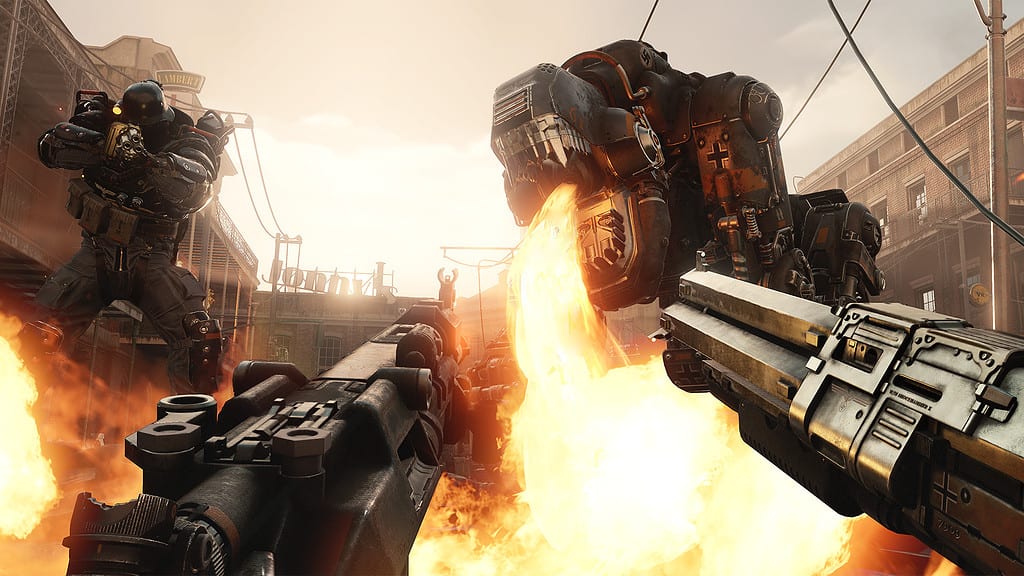
©Wolfenstein: The New Colossus screenshot. – License
The direct sequel to 2014’s New Order takes place five months after the events of that game. It sees B.J. and his allies in the Kreisau Circle attempting to start a revolution in America, which has fallen under Nazi control since they won the war during The New Order. Wolfenstein II launched for PS4, Xbox One, Windows, and Nintendo Switch. Like its predecessor, it allows players to switch between all-out action and stealth, as the need demands. While it fell short of the acclaim New Order received in 2014, The New Colossus is still regarded as a considerable success.
Wolfenstein: Youngblood (2019)
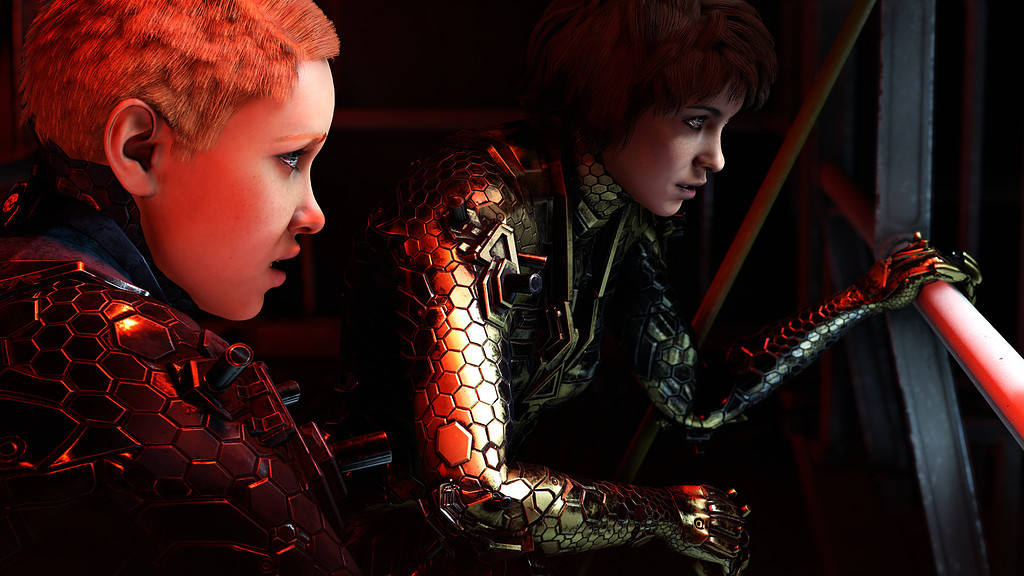
©Wolfenstein: Youngblood screenshot. – License
MachineGames’ next entry in the Wolfenstein series makes a considerable departure from the norm by not featuring B.J. Blazkowicz as the playable protagonist. Instead, you control one of his twin daughters, Jessie or Zofia. Youngblood features a cooperative multiplayer mode where two players can fight through the Nazi forces together, each controlling a separate twin. The plot takes place twenty years after The New Colossus, and focuses on the Blazkowicz twins journeying through Nazi-occupied Europe in search of their missing father. Unfortunately, despite the integration of co-op, Youngblood did not review as favorably as Wolfenstein II or New Order.
Wolfenstein: Cyberpilot (2019)
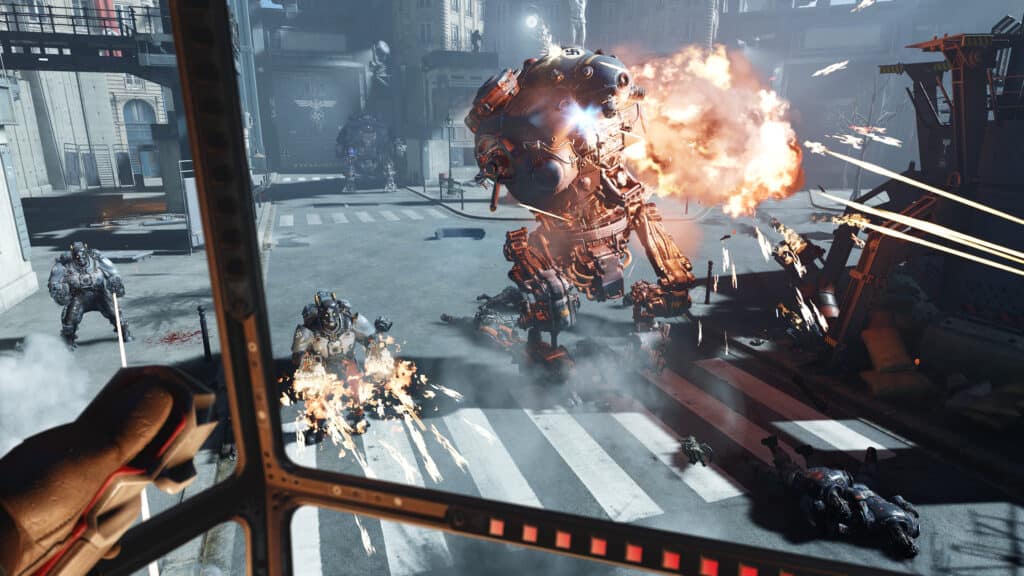
©Screenshot from Wolfenstein: Cyberpilot. – License
Wolfenstein: Cyberpilot was released simultaneously to Youngblood as a spin-off taking place a week before the events of the co-op game. It stars a hacker in the French resistance taking control of Nazi mechs to overthrow their oppressors. Cyberpilot is distinct in that it is a VR game, using headsets to immerse players in the action. Unfortunately, despite this novel take on the formula, Cyberpilot fell short in the eyes of players and critics. Players found the narrative thin and the combat mechanics underdeveloped.
